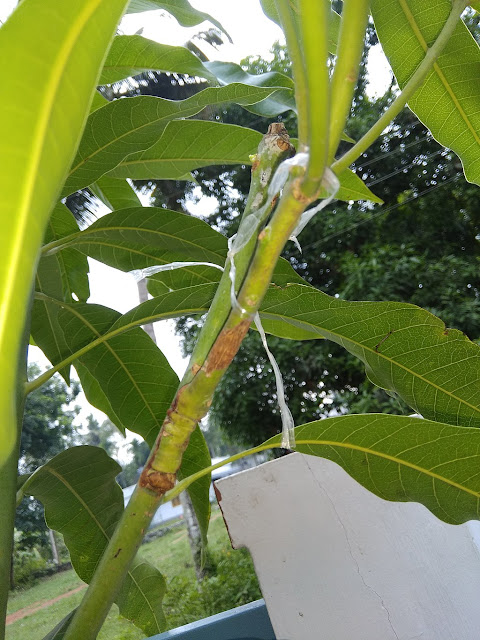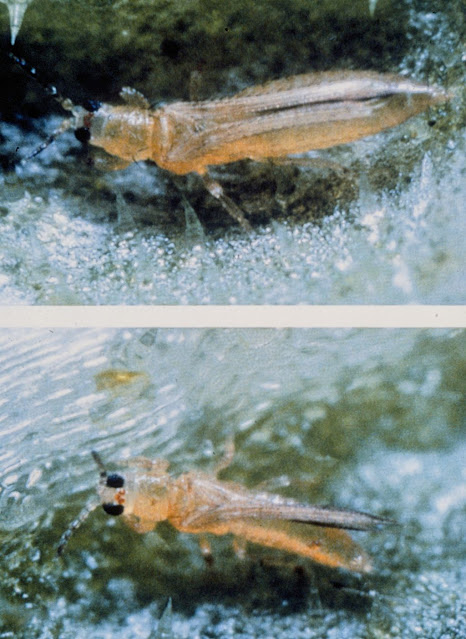Do Mangos Grow in Florida?

Do mango trees grow in Florida? Kinda! How well they grow and HOW you grow them depends on what part of the state you live in.
Mangos are tropical, and they need constant heat and humidity. The best mango growing zones are 10 and 11, but it is possible to grow mango in parts of zone 9, too.
 |
| source: Flickr |
Young mango trees die if the temperature drops to 30°F. A mature tree can tolerate as low as 25°F for a couple of hours but anything longer, they’ll suffer or even die.
If you want to grow your mangos outdoors year-round, you’ll need to live in South or lower Central Florida.
I live in Central Florida, zone 9B. My next door neighbor has a huge mango tree that produces every year. I have my mango in a pot because it’s young and I sometimes need to bring it inside during the winter.
If you’re planting your mango in the ground, choose sometime in spring. You’ll want to avoid any extremes in temperature for your sapling, either cold or hot.
If you’re in North Florida, you have to grow your mango in a container so that you can take it indoors when it gets chilly.
How do Mango Trees Grow?
Mango trees can be grown from seed or from grafts. The trees that you buy from the store or a nursery almost always come from grafts.
Grafting is a technique that attaches the branch of one tree to the trunk of another. The branches are called buds and the trunk is called the rootstock. Eventually, the bud will grow itself onto the rootstock, forming together as one tree.
 |
| Credit: Amjithps |
Grafted mango trees produce fruit in three to five years while those grown from seed take more than six. Not only do grafted mango trees produce fruit quicker than those grown from seed, but the fruits are more uniform, too.
There are a lot of videos online on how to grow a mango tree from seed. This can be a fun experiment, but it’s usually a waste of time if you’re looking to grow fruit.
Most of the mangos available in the grocery store are hybrids – if you plant a seed from a hybrid mango it’ll grow into a tree, but it’ll be sterile. This means it won’t bear fruit.
After your tree has been growing for three to six years, it’ll start to flower. After it flowers, it’ll be 100-150 days before the fruit forms.
Most mango trees bear fruit once a year for about 10 years. After 10 years, it may only bear fruit every other year.
When to Harvest Your Mango
A healthy mango tree in Florida should give you four to six bushels of fruit. Most mangos are ripe and ready to pick from May through September.
You’ll want to check planting and harvesting times for your specific mango variety – it’s different from type to type.
One of the best things about mango is that you don’t have to harvest them all at one time. You can pick them off the tree as you go. That way, you can enjoy your mango harvest over the course of the season.
Mangos will also ripen after you pick them. If you want to pick them early, it’ll only take a few days for them to be ready to eat. Leave them on the counter to ripen – keeping them in the fridge could cause discoloration and loss of flavor.
Mangos are usually picked when they start getting a little bit soft. Depending on the variety, some will also turn color, usually red or yellow.
 |
| Credit: AsitK. Ghosh |
Mango Varieties for Florida
Fun fact: the mango tree is a member of the sumac and poison ivy family. They are native to Myanmar, Bangladesh, and India.
There are thousands of different varieties of mangoes to choose from. Some popular varieties for Florida are:
| Variety | Desctiption | Harvest Time |
|---|---|---|
| Kent | Large fruit, excellent flavor | late season |
| Haden | originated in Florida, good flavor | mid season |
| Pickering | good for containers, sweet | mid season |
| Lemon Zest | citrusy and sweet | early season |
| Nam Doc | good for containers, eaten green or ripe | early to mid |
| Valencia Pride | large, relatively cold hardy | mid season |
| Carrie | rich and sweet | mid season |
| Cac | medium fruit, green | mid season |
| Tommy Atkins | most popular, disease resistant | early season |
| Cogshall | good for containers, slow growing | mid season |
How to Grow a Mango Tree in a Pot
If you live above zone 9B, then growing your mango in a container is your best bet. As long as you follow some basic guidelines, mangos grow well in pots.
First, chose a dwarf mango variety, sometimes called condo mango trees. A typical mango tree can grow 60-100 feet tall but a dwarf tops out at 6 feet. Some good choices here are the Nam Doc, Cogshall, and Pickering.
Second, chose the right sized container – smaller is better. A five-gallon pot is ideal.
The mango’s need for high humidity and hot temperature makes it susceptible to root rot. It’s also easy to overwater your mango. If you put your mango in a container that’s too large, then the soil will stay too wet for too long and it’ll get root rot.
Third, make sure your soil is well-draining. This is another way to prevent root rot. A good mix is one part potting soil to one part sand.
After you’ve got your dwarf mango tree potted up in the right sized container with the right ratio of soil and sand, now it’s time to choose a good spot for your container.
Your mango tree needs plenty of sun, 6-10 hours is best. If your mango is on the young side, it’ll need a little less, otherwise it could get burnt. I keep my mango sapling in my carport, where it gets indirect sunlight.
No matter where you’re located in Florida, you should be able to keep your mango container outside through summer, fall, and most of the spring.
If you have to bring your container inside during wintertime, be sure to keep it away from any drafty areas and put it in a sunny spot.
As your tree gets taller, you may need to stake it up so it doesn’t fall over.
How to Fertilize Your Mango Tree
 |
| Credit: Raviteja |
It’s important to fertilize your mango trees for proper growth and fruit production.
Young trees need to be fertilized every two to three months with a 1/4lb of fertilizer. After the first year, you can pull back a bit and fertilize two to three times a year. The amount of fertilizer you give depends on how big your tree is, so follow the instructions included with the fertilizer.
Young mango trees need nitrogen and fruit-bearing mango trees need potash. It’s a good idea to use 6-6-6 fertilizer for the first few years and then switch to 0-0-22 once your mango tree starts to flower.
When to Prune Your Mango Tree
Because typical mango trees get so tall, pruning is important. If you don’t prune your tree as it grows, the fruit will be too high to reach.
Pruning also encourages new growth, helps your tree look more ornamental, and increases air flow to prevent fungal disease.
The best time to prune your mature mango tree in Florida is after you pick your fruit.
While the mango fruits are growing, leaf production slows down because the tree is putting its energy into the fruit. When the fruit is picked, the tree puts its energy back into the leaves which causes a wave of new growth.
You’ll need a few tools to prune:
- Gardening gloves
- Pruning shears
- Hand saw
The easiest way to learn how to prune your mango tree is by watching. There are different techniques to pruning depending on how big your mango tree is.
How to prune a bigger mango tree:
Mango Troubleshooting
Pests
Mangos do suffer from some pest problems, but they don’t usually affect fruit production. Keep an eye out for the following pests to avoid an infestation:
Thrips
 |
| Source: FloridaDivision of Plant Industry Archive |
Mites
 |
| Credit: Eric Erbe |
Scale
 |
| Credit: Mokkie |
Diseases
The two biggest diseases you’ll find in mango trees are anthracnose and powdery mildew. Both are fungal issues.
 |
| Source: Knowledge Center |
The best defense against fungal diseases is prevention. Plant your trees in a sunny location so that the leaves can dry out quicker, prune your trees regularly, don’t overwater.
You can also spray your mango trees with copper fungicide twice in early spring, 21 days apart. Spray every year before you see any signs of fungal disease – copper fungicide has no effect on disease once it starts.
 |
| Credit: Scot Nelson |
Your local UF/IFAS Extension office is a great resource for more information on disease and pest prevention.
First article picture photo credit: Piyumi2000
Disclaimer : I get commissions for purchases made through links in this post.






